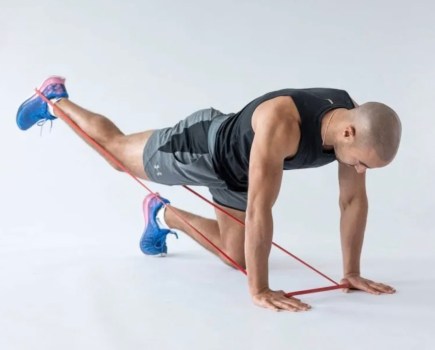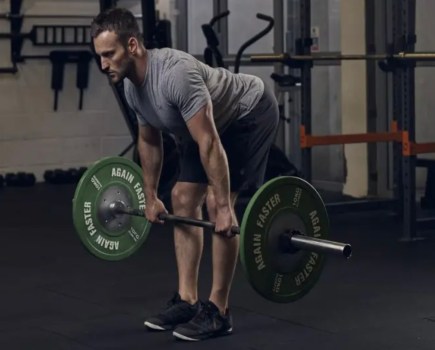Adding these glutes exercises to your routine will help you improve lower-body strength and general athleticism.
Whether you prefer training with dumbbells or you fancy trying out resistance bands to train your legs and lower body, it’s time to pay some attention to your glutes. Glute training has shown a leap in popularity over the last five to ten years, driven mostly by the increase in competitive physique contests, and of course the growth of the Instagram generation.
However, glute training isn’t only for women! This is an important muscle group to train and strengthen for everyone – regardless of whether the goals are aesthetic or to increase performance or mobility.
How the glutes work
The glutes attach to the posterior aspect of the pelvis, and wrap around the hip joint, attaching to the upper and outer aspect of the femur. This 3D anatomical arrangement means that they have the ability to produce force in all three planes of motion:
- Sagittal: forward and back (hip extension, moving the femur behind the body)
- Frontal: side to side (hip abduction, moving the leg to the side away from the midline of the body)
- Transverse: rotation (rotating the leg externally away from the midline of the body)
In order to train the glutes correctly, you need to train all three of these movement patterns.
Why you should train glutes
The glutes (along with their synergistic partners the hamstrings) play a role in extending the hip. What we mean by this is that they’re responsible for moving the femur (thigh bone) behind the midline of the hips. This action forms one half of the gait cycle (walking) which makes it a fundamental building block of human movement, and the foundation of any athletic activity.
However, as well as playing a dynamic role in extending the hip, the glutes also play a static role as an ‘anti-gravity muscle’. If we think of the hip joint as a major pivot, and our centre of gravity (the navel) sitting above it, then we require an equilibrium of forces acting around the pivot to keep it balanced.
The job of the glutes in this balancing act is to pull down on the back of the pelvis to counteract forces pulling down on the front. Considering most objects you lift or carry will be in front of you, and anyone who carries excess bodyweight is also most likely to be in front of them, then the role of the glutes in balancing this all out is a very important one. Your glutes quite literally hold you up.
When programming for clients, I will include specific glute training for everyone, no matter their goals. It really is that important.
Why you can trust the workouts in Men’s Fitness
At Men’s Fitness we pride ourselves on delivering information that serves a singular purpose: to improve some aspect of your health, fitness or wellbeing. For over 16 years, we’ve been publishing authoritative health and fitness content – written by our expert editors and contributors. Each of our workouts has been created and tested by either a highly experienced editor or expert contributor. This workout was devised by renowned personal trainer Luke Worthington.
These are the best glutes exercises to add to your routine
- Hip thrust
- Sumo Romanian deadlift
- Side-lying abduction
- 45-degree back extension
- Frogger
- Single-leg Romanian deadlift
1. Hip thrust
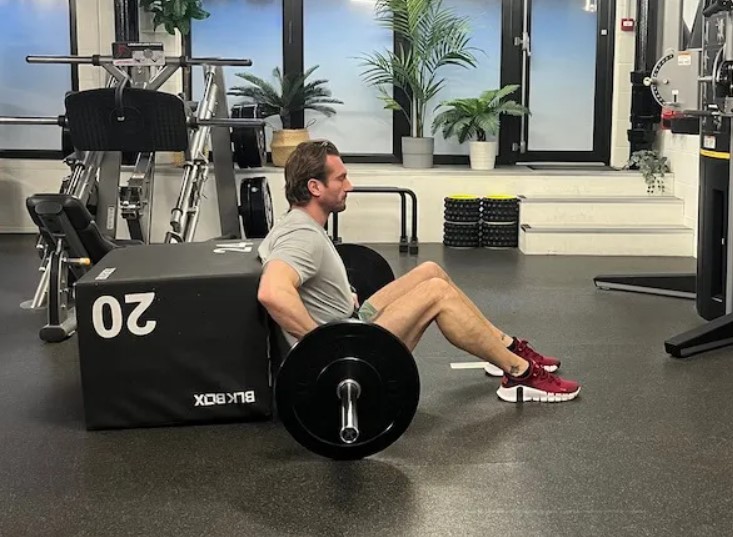
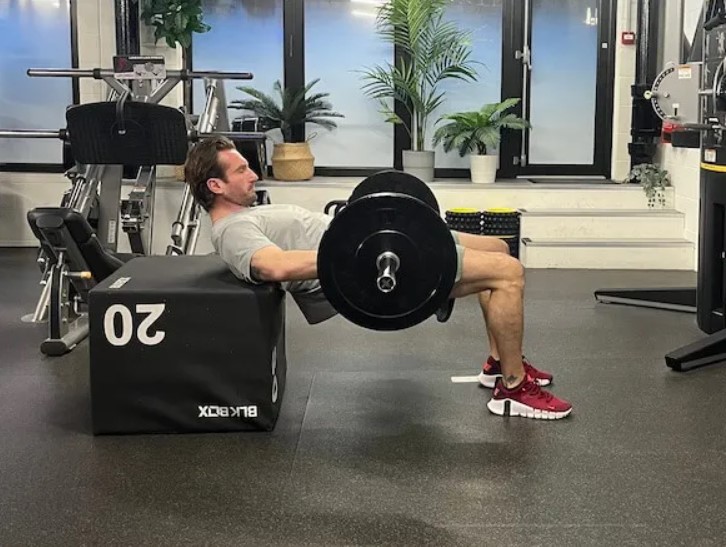
Why I like it: You just have to look at the numerous barbell hip thrust benefits to see why I use this in almost all my barbell sessions.
Recommended reps: 6-8
- Imagine you’re lifting your belt buckle to your chin, to ensure there is no extension of the lumbar spine
- Glue the chin to the chest to ensure there is no extension of the cervical spine (neck)
2. Sumo Romanian deadlift
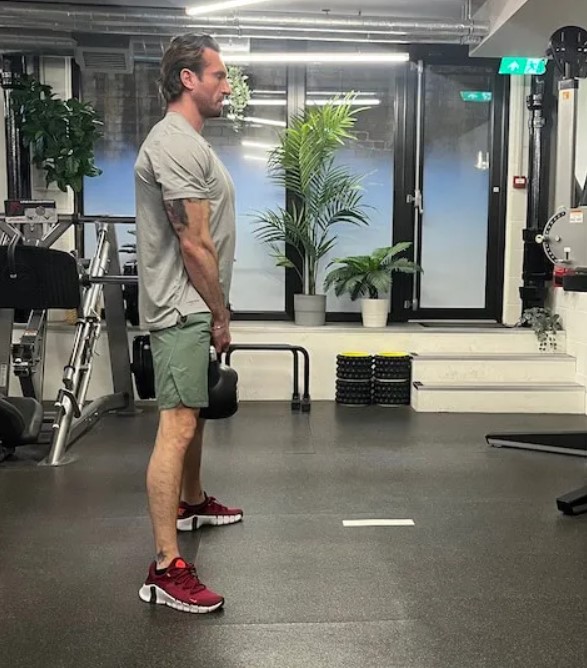
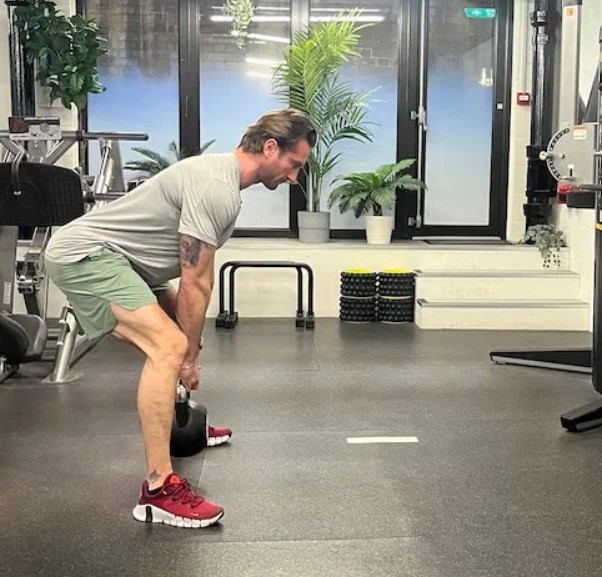
Why I like it: I often recommend the sumo deadlift for beginners as it’s easier on your lower back. It also activates more muscle groups, works your core harder and allows you to lift bigger weights.
Recommended reps: 8-10
- The weight should travel in a straight line up and down, and the hips should push back behind you
- Pointing the toes outwards at around a 45-degree angle allows the glutes to work through more of their fibre length
- This is one of the best glutes exercises, and you can easily swap the kettlebell (pictured) for a dumbbell
3. Side-lying abduction

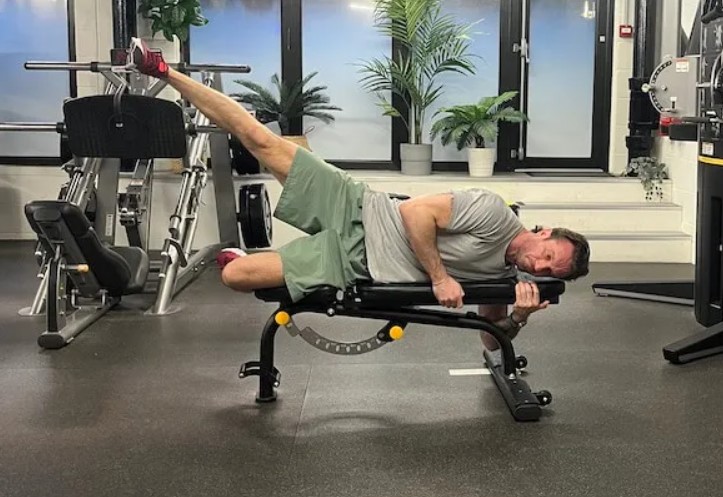
Why I like it: If you have weak hip muscles, they’ll need isolated attention. I find the side-lying hip abduction is a great way to isolate the hip movement without bearing any weight.
Recommended reps: 12-15
- Hug the bench tightly with the bottom arm. This helps to stabilise the torso and keep the movement coming from the hips.
- Leading with the heel, and not the toe, helps to emphasise the glute over the hamstrings and TFL muscle.
4. 45-degree back extension
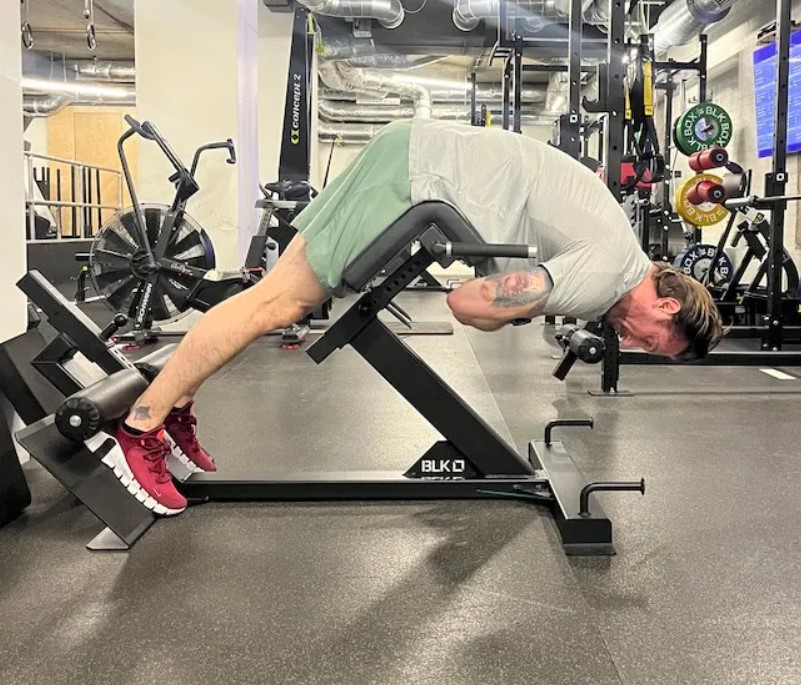
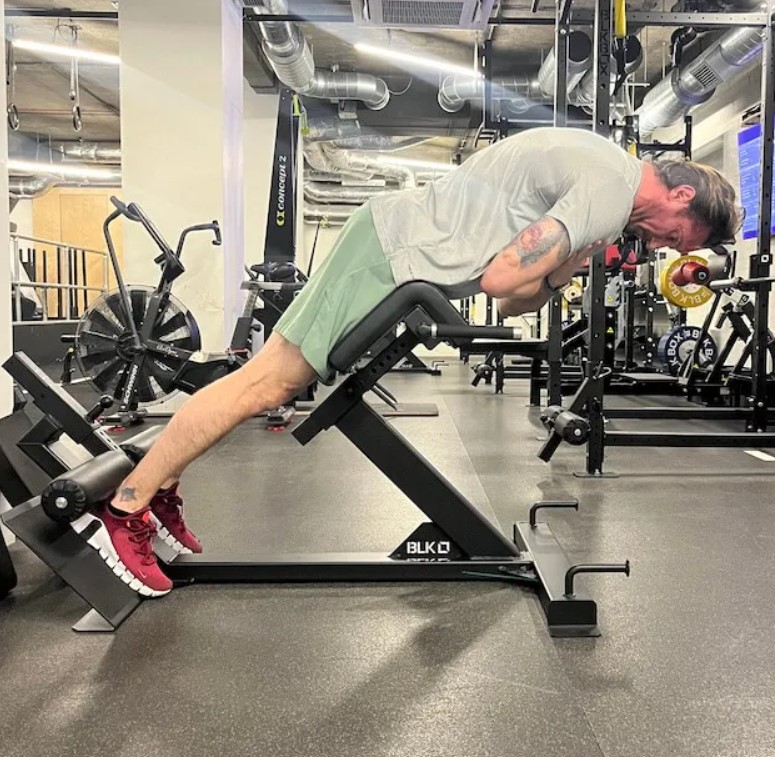
Why I like it: Deadlifts may be better for developing overall strength but I’ll go to the back extension when I want to isolate the lower back muscles, glutes and hamstrings.
Recommended reps: 10-12
- Rounding out the upper back into a ‘slouch’ type posture as you perform this exercise lengthens the back extensor muscles
- If you’re lengthening them, you cannot be contracting them to assist with the movement, which helps to protect the lower back and keep the work in the glutes
5. Frogger
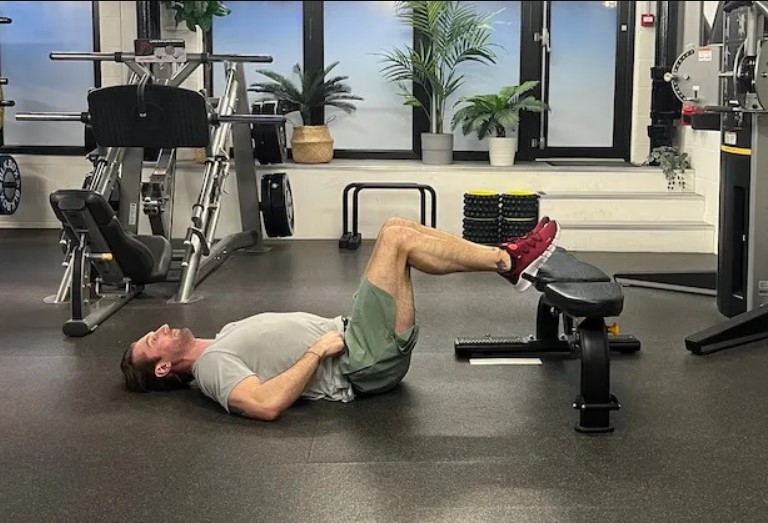
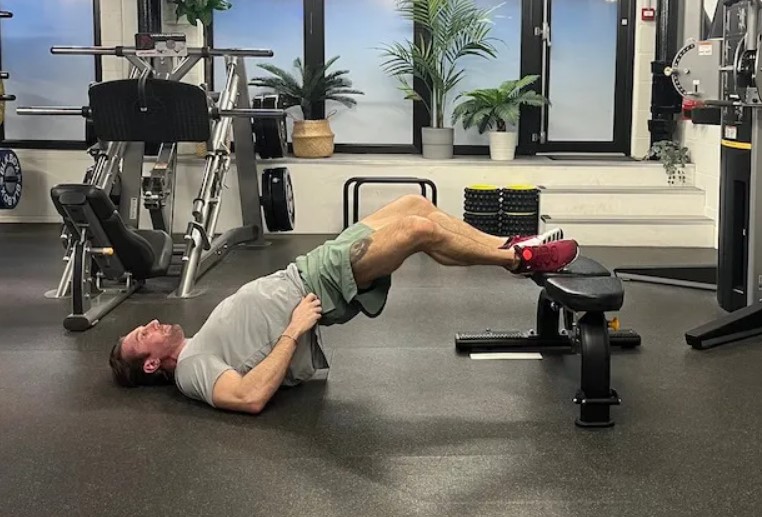
Why I like it: The frogger exercise naturally targets the glutes, but I use this as much to work the core, mobilize the hips and also build cardiovascular endurance.
Recommended reps: 15-20
- Initiate the separation of the knees as soon as the buttocks lift from the floor.
- This allows you to train external rotation at the same time as extension, accessing more glute fibres with every repetition.
6. Single-leg Romanian deadlift
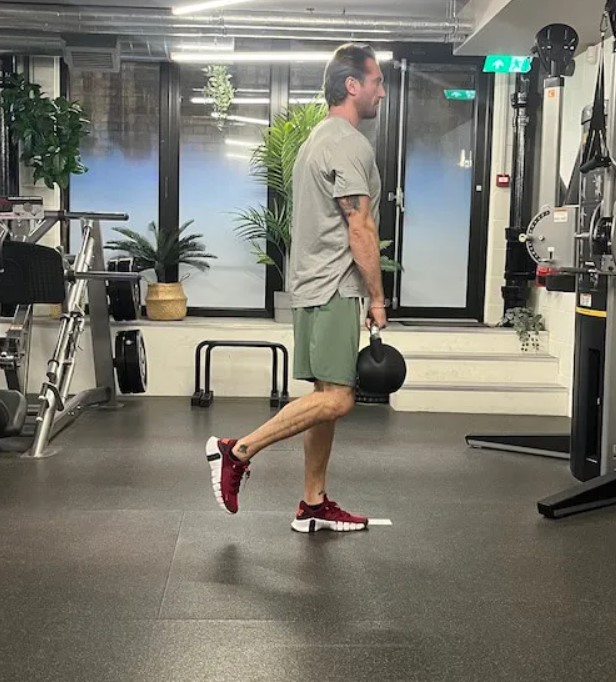
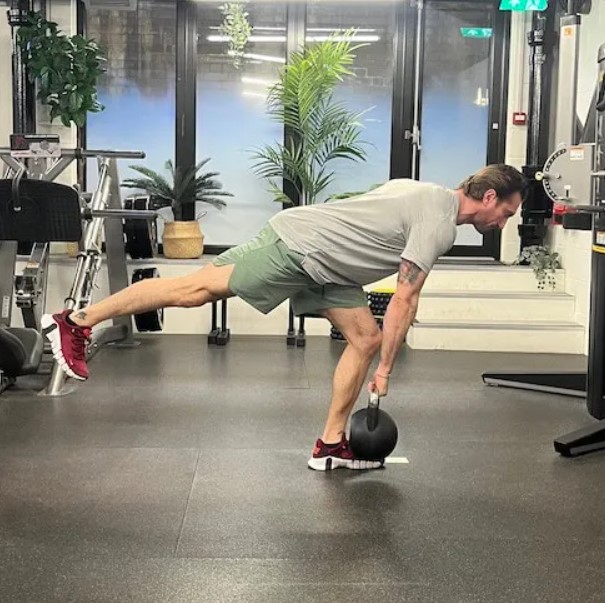
Why I like it: I’m a big fan of the single-leg Romanian deadlift as it’s great for promoting hamstring and glute health, improving hip joint function and mobility and reinforcing proper hamstring engagement.
Recommended reps: 8-10
- Loading the opposite arm and leg allows you to rotate over the stance leg, training the working glute through transverse plane as well as sagittal.
- You can encourage this even more by lowering the weight in front of the grounded foot rather than beside it.
- Clenching the fist of the non-working arm helps to improve balance by equalising tension.
For the above Romanian deadlift we’d recommend using a kettlebell like the Mirafit 16kg cast-iron kettlebell:
Related content:





